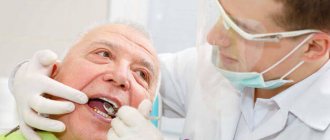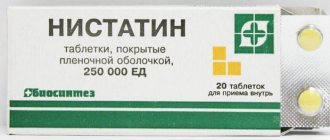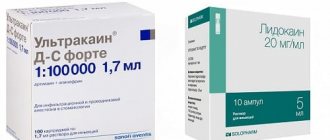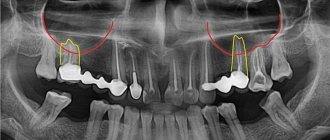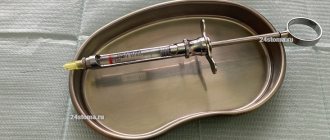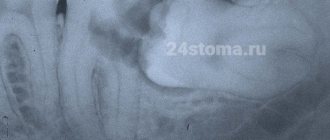Stages of sedation Types When treating children Possible complications Indications Preparation for the procedure Contraindications Anesthesia Alternatives
There are few people in the world who are not afraid of a visit to the dentist. Against the backdrop of such a widespread phobia, calls are increasingly being made to undergo treatment under sedation, without pain. What is it and is this method as safe as they say?
Dental treatment under anesthesia in adults is carried out in rare cases, more often in hospitals. But sedation is more common. This method causes inhibition of the nervous system to reduce panic and stress during the procedure. There is contact with the doctor, the patient is able to respond to stimuli. With this method of anesthesia, the patient breathes on his own, all his reflexes are preserved. This is the main difference between sedation and anesthesia, in which the degree of inhibition reaches such a level that consciousness turns off, reflexes are not preserved, and the patient does not respond to physical and verbal stimuli. The main purpose of anesthesia is to put the patient into a state in which he does not feel anything.
The main goal of sedation is not to harm the patient’s health, so before the procedure it is necessary to do a full examination of the body and obtain a conclusion from a general practitioner and anesthesiologist.
Sedation will help:
- relax during an unpleasant or painful procedure;
- perform local anesthesia without tension and fear;
- provide comfort, moral and physical;
- create a calm environment for the dentist to work.
Stages of sedation
- Easy
. The patient is in a state of relaxation, but is awake and makes contact with the doctor. Although his reactions and coordination are slightly reduced. This type of sedation is also called superficial. - Average
. A state of consciousness in which patients respond to tactile stimuli, all functions are preserved, reflexes work, and there is interaction with the doctor. - Deep
. The patient reacts only to strong stimulation; the patient does not respond to a call, but the cardiovascular system works normally. Breathing may become irregular
The next stage is complete anesthesia. With it, there is no reaction even to strong painful stimuli. Respiratory support is often needed.
Types of sedation in dentistry
There are quite a few ways to administer relaxing drugs, but only a few of them are used in dental clinics:
- Inhalation
. The most common mind control technique. The advantages of dental treatment under sedation through inhalation: quick effect, the process is easy to control, consciousness is restored in a very short period of time. The most common use is nitrous oxide. It has a relaxing effect, reduces motor activity and has some analgesic properties. Subject to the rules of supply and percentage of gases, there are practically no side effects. - Injection
. The drug is administered once, as an injection or gradually, through an intravenous infusion system. The most well-known drugs are profopol and medazolam. Their hypnotic effect allows dental treatment to be performed while you sleep, while maintaining basic reflexes and spontaneous breathing. Recently, dexmedetomidine has been increasingly used because it does not lower blood pressure. - Oral medication
. If the patient is afraid of the needle, but calmly takes the pills, they can be used. - Intranasal dispersion
. An anesthetic is sprayed into the nasal passages. So the drug, through the taste buds, immediately enters the brain. Quick effect, bioavailability, central action and ease of use make sprays very popular.
Minimizing risks
If you are at risk, tell your dentist about it at the very beginning of your appointment. It is also very important to report if you have ever had an allergic reaction to anesthesia. Write down exactly what drug triggered it, and be sure to notify your doctors.
Dentists, in turn, take all precautions to minimize the danger:
- carefully study the anamnesis;
- give preference to drugs with a minimum concentration of vasoconstrictors;
- an aspiration test is carried out: after inserting the needle, the medium in which its tip is located is sucked in to prevent it from entering a blood vessel;
- inject the anesthetic slowly, observing the patient’s reaction;
- have an emergency medical kit for resuscitation on hand;
- sedatives are used (sedative premedication), which relax the patient and allow the dose of anesthetic to be reduced [3, 4].
Already at the preliminary consultation, you can understand how psychologically difficult it will be for the patient to undergo the operation.
If a patient immediately says that he needs more anesthesia because it “doesn’t work” on him, this is the first sign that he is very afraid of surgery (in fact, anesthesia affects everyone the same). This means that sedative premedication may be needed. Ashurko I. P., Ph.D., Associate Professor, Sechenov University [4]
During traumatic manipulations in the oral cavity - for example, implantation or tooth extraction - you cannot do without anesthesia. However, modern dental equipment can solve many problems without causing pain. Often, treatment of caries or installation of a filling can be carried out without local anesthesia. Try to avoid painkillers during simple interventions to ensure you avoid any unpleasant consequences associated with them.
List of sources:
- Sharapov O. Yu., Borozda I. V. Local anesthesia in dentistry: a textbook. Blagoveshchensk: Federal State Budgetary Educational Institution of Higher Education of the Amur State Medical Academy of the Ministry of Health of Russia, 2022. // URL: https://www.amursma.ru/upload/iblock/bff/Uchebnoe_posobie_Mestnaya_anesteziya_v_stomatologii_.pdf (access date 08/28/2020).
- Siberian Medical Portal // URL: https://www.sibmedport.ru/article/5529-chem-opasna-mestnaja-anestezija/ (date accessed 08/28/2020).
- Baart J. A., Brand X. S. Local anesthesia in dentistry. M.: Med. lit., 2010. // URL: https://dental-ss.org.ua/load/kniga_stomatologia/khirurgicheskaja/baart_mestnaja_anestezija_stomatologii/10-1-0-855 (access date 08/28/2020).
- Our teeth, gums and bone tissue through the eyes of a dental surgeon, interview with Ashurko I.P., Ph.D., Associate Professor // URL: https://www.unident.ru/publications/Osobyj-vzglyad-13502.phtml (date of access: 09/02/2020).
Sedation in pediatric dentistry
Up to 50% of children
[1] hide dental problems due to fear of treatment. This affects their quality of life and oral health both in childhood and when they grow up. Therefore, the use of mind control measures when providing dental care to children is justified, subject to strict adherence to rules and regulations. Most often, medicated sleep during dental treatment in children is achieved using nitrous oxide, but there are studies that have confirmed the effectiveness of the use of other medications. It is worth remembering that sedation should be used only when no other method of dental treatment for a child does not work. This will help avoid harmful consequences.
Consequences of sedation in dentistry
Specific problems with the use of mind control drugs depend on the route of administration and the mechanism of action of the drugs.
At the beginning of the procedure, you may experience increased activity, physical restlessness, talkativeness, and increased sociability.
A common symptom is an obsessive cough. This problem can be stopped by reducing the dose of the drug. Complications after sedation can appear both immediately and in a delayed period.
Possible short-term complications
- Breathing disorders (slow breathing, lack of oxygen);
- problems with hemodynamics (drop in blood pressure, irregular heart rhythm);
- depression of the central nervous system;
- intestinal dysfunction, vomiting.
Delayed symptoms
- Development of psychoses;
- hallucinatory syndrome;
- paralysis.
Is sedation dangerous? No, if it is carried out by an experienced doctor who has undergone special training, and the clinic is equipped with everything necessary to eliminate the consequences. But this is not a magic pill that can be prescribed to everyone without thinking about the consequences.
Concept of general anesthesia
General anesthesia also involves the professional actions of an anesthesiologist aimed at artificially introducing the patient into a state of deep sleep with the help of potent drugs used only in anesthesiology. At the same time, the activity of the central nervous system is reduced as much as possible, which is accompanied by a complete absence of pain, any reaction to irritating factors and partial elimination of reflexes. It could be a narcotic drug.
No matter how sad it may sound, at present, general anesthesia with mandatory hospitalization is now mainly carried out only in public clinics, motivated to retain the patient for several days to simulate statistics with a huge hospital load on “bed-days” and the formation of a bonus fund doctors, as these are the rules now.
However, time does not stand still and now a modern operating room in a specialized non-state dental clinic, which involves the use of general anesthesia in its work, is always provided with the following medical attributes:
- artificial lung ventilation device;
- availability of centralized oxygen supply;
- laryngoscopes, blades of various sizes and endotracheal tubes of all sizes;
- monitors for continuous monitoring of all vital signs, that is, blood pressure, heart rate and blood oxygen saturation (saturation);
- subclavian catheters and related accessories;
- defibrillator and never need it again;
- drugs to provide emergency assistance in the event of any acute situations, which is more likely during general anesthesia (adrenaline, atropine, refortan, stabizol, dopamine, mezaton);
- medical equipment that ensures comfortable work for the anesthesiologist (manipulation table, fluorescent lamp, infusion pump, disposable consumables, intravenous catheters, disposable systems in sufficient quantities).
Indications
Dental sedation is indicated in a state of increased excitability, fear of treatment, but is not limited to this. This method must be used if there is:
- strongly expressed gag reflex;
- mental problems that exclude interaction with the patient;
- traumatic manipulations.
Like any medical intervention, mind control using medicinal methods requires careful preparation. The decision is made by the doctor taking into account all the data.
Contraindications to sedation
Like any medical procedure, depression of consciousness has contraindications. There are very few of them. The only absolute contraindication is myasthenia gravis (muscle weakness). The remaining states are relative. These are drug or alcohol intoxication, hypotension, a full stomach, a disorder of consciousness that prevents interaction with the patient, pregnancy, a condition after an acute heart attack/stroke. An opinion on the possibility of carrying out this procedure can only be issued by a general practitioner and an anesthesiologist.
The choice of method may also be limited. Thus, inhalation methods are contraindicated for sinusitis and other diseases of the upper respiratory tract. The doctor must know about all diseases in order to select the appropriate drug for a particular one in order to use medicinal sleep in dental treatment without consequences. That is why it is important to treat teeth in a clinic with modern technical facilities. Typically, such dentists employ experienced anesthesiologists and have equipment for first aid.
Anesthesia for tooth extraction and treatment
Usually, people turn to the dentist when they can no longer bear the toothache. In this case, there is usually a significant increase in the severity of the problem compared to its initial stage, when the pain was tolerable and a visit to the doctor was postponed. This attitude is always fraught with complications of treatment. Modern dental anesthesia at the Sanation clinic has methods that can provide effective pain relief during the therapeutic procedure.
About the essence and types of anesthesia in dentistry
Dental anesthesia is a manipulation performed for the purpose of pain relief and eliminating the sensitivity of oral tissues during the treatment procedure. The use of dental anesthesia is necessary when removing a tooth (nerve), filling, installing a crown, surgical treatment of the jaw, or prosthetics.
There are several types of anesthesia: local, general and combined. The use of local anesthesia is targeted; it is intended to temporarily eliminate the sensitivity of the required area of the oral cavity during the treatment procedure. General anesthesia is rarely used in dentistry. To use it you definitely need strong motivation.
General anesthesia is used to achieve pain relief, put the patient to sleep, relax the muscular system, and ensure the elimination of control over reflexes. The entire body is under the influence of general anesthesia; the influence of local anesthesia is limited to the area where the anesthetic is administered. In dentistry, combined anesthesia is also used, which consists of a combination of general anesthesia with sedatives and local anesthesia.
About local anesthesia options
To relieve pain from simple procedures in dentistry, special anesthetic gels and sprays are used, which eliminate sensitivity of the gums for a short period of time. This method can be appropriate when removing falling baby teeth, tartar, and also if it is necessary to numb the injection to a patient who has increased sensitivity.
Freeze completely
the system of the problematic tooth and the necessary part of the gum are made possible by the so-called infiltration anesthesia, which is an injection of an anesthetic composition that minimizes the reactions of the receptors and allows for short complex operations.
Local anesthesia is contraindicated in diabetics, patients with kidney disease and certain other health conditions. Allergy sufferers should also be careful when choosing a pain reliever. The maximum duration of local anesthesia is about two hours. Therefore, during long-term dental operations, general anesthesia is used.
About the features of the use of general anesthesia
General anesthesia is used when surgical treatment of a large number of teeth is performed. The use of general anesthesia is also necessary if the patient is allergic to injectable drugs. In some patients, procedures performed in the dentist's office cause panic; in their case, general anesthesia is also appropriate. Determining the indications for the use of general anesthesia is carried out by two specialists: a dentist and an anesthesiologist. During the operation, the anesthesiologist monitors the effect of anesthesia on the patient's body.
The patient, under the influence of anesthesia, is in a state of medicinal sleep, in which several stages are noted:
- - Analgesia.
The patient's reflexes are preserved in an unconscious state. At this stage, the doctor can perform simple and low-traumatic actions; - — Stage of excitement.
It manifests itself in the stimulation of breathing, the activity of reflexes, increased muscle tone, and noticeable dilation of the pupils. It is a transitional stage to the deep sleep stage; - — Surgical stage.
The patient's breathing is smooth and deep. There are four types of anesthesia at the surgical stage: with the first two - light and superficial - you can, for example, put a filling or remove a wisdom tooth; the other two - full and super deep - are used for complex operations.
The type of anesthesia is selected by a specialist depending on the severity of the problem and the scope of surgical actions. Introducing the patient into a state of medicated sleep is achieved in two ways: intravenously or using a mask (using gas).
Contraindications to the use of general anesthesia
General anesthesia is contraindicated in patients:
- - having serious heart pathologies;
- - with bronchial asthma; - having impaired functioning of the endocrine glands;
- - under the influence of alcohol or drugs;
- - suffering from hormone-dependent diseases.
The patient can be under general anesthesia for no more than 3 hours. After three hours, the operation is interrupted so that, if necessary, it can be resumed after some time.
What are the advantages and disadvantages of general anesthesia?
The advantages of general anesthesia compared to local anesthesia include:
- - extended validity period. General anesthesia allows the doctor to perform an operation that requires a lot of time;
- — prescribed without restrictions to allergy sufferers, since it is hypoallergenic;
- — provides improved quality of the filling: under the influence of anesthesia, salivation decreases, and the filling material dries faster;
- - used in pediatric dentistry, in cases where the child behaves extremely restlessly in the doctor’s office.
The disadvantages of general anesthesia include the inability of an unconscious patient to move and respond to the doctor’s orders and requests, so the surgeon has to adapt to the position of the sleeping patient’s oral cavity. In addition, in the absence of pain reactions in the patient, the risk of medical error increases, and therefore the doctor’s responsibility also increases.
Anesthesia is harmful to the body to a certain extent, as it has a negative effect on brain cells. Sometimes, put into a state of medicated sleep, the patient comes to his senses, and sensitivity is restored, which is not life-threatening, but is fraught with psychological complications. Anesthesia has a serious impact on the functioning of the human body, and its use must have a strong medical justification.
Helpful information
Anesthesia Tooth extraction under general anesthesia Dental treatment under general anesthesia
Anesthesia in dentistry
There are medical terms that in ordinary life lose their meaning or acquire additional meaning. One example is the expression “to treat teeth under anesthesia.” In 99% of cases, this expression refers to ordinary sedation. Due to a common mistake, even dentists sometimes use the term “anesthesia,” although this means depression of consciousness with preservation of reflexes and responses.
Dental treatment under general anesthesia is performed extremely rarely. Its administration requires special equipment and conditions. Usually, this happens in a hospital, by an oral and maxillofacial surgeon, as a procedure accompanying the operation. During manipulation, constant monitoring of blood pressure, heart rate, respiratory rate, and blood oxygen saturation is required.
General anesthesia during dental treatment means a complete shutdown of consciousness, including protective reflexes, which can be dangerous. The patient should not choose the method of pain relief himself; this can only be done by a doctor after a certain examination.
Advantages
Of course, the main advantage of general anesthesia is the complete absence of any patient movements, which lengthen the operation and complicate the doctor’s actions. In addition to this fact, there are a number of other advantages of dental treatment in a completely unconscious position, that is, the following:
- relevant for super-traumatic procedures, the patient does not feel compression, vibrations or other tactile stimuli at all;
- absence of any pain after the procedure, which is due to the long residual presence of the drug in the blood;
- minimizing the risk of postoperative complications, since the doctor is not distracted by the patient’s reaction, which can be quite different if anesthesia or at least sedation is not used;
- decreased saliva production, which is ensured by special medications;
Despite all the advantages of general anesthesia, its use is indicated only in certain cases, in contrast to sedation, which is used at the request of the patient in the dental office, even when the procedure is minimally invasive.
Important! When performing sedation (not anesthesia), the anesthesiologist always ensures maximum psycho-emotional comfort, since he excludes specific micro-irritants from the child’s memory: white coats, smells of the dental operating room, noise effects, medical sounds and visual stimuli;
Under sedation, it is possible to perform any full-scale operation to restore the dentition (bone grafting, ENT surgery, implantation using sinus lift surgery, prosthetics).
